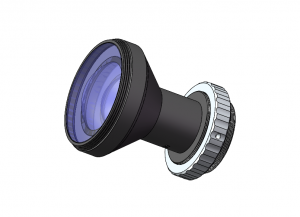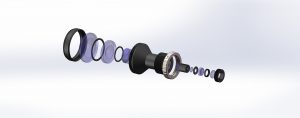Reverse optical engineering is a critical process that involves understanding, analyzing, and recreating existing optical components when original designs are unavailable. This process includes several key steps: understanding the lens’s use, disassembling it, recording data, and deriving new designs to produce high-quality lenses tailored to meet customer needs.
Reverse optical engineering entails a thorough examination of existing optical systems or components to understand their functionality. This technique is essential when the original design is not available or when improvements are desired. It allows for the creation of custom optic systems, the identification of original engineering efforts, and the replication of intricate designs more efficiently and cost-effectively. This method also facilitates the refinement of focal points and the capture of detailed object features for further analysis and manufacturing.


To successfully reverse engineer a lens, it’s crucial to comprehend the product’s use scenario and application purpose. This foundational understanding helps form a clear concept of the lens’s light path and ensures the final product meets customer requirements.
Measurement and testing techniques are employed to gather performance parameters and data about the lens, including optical and mechanical properties. Key parameters such as focal length, entrance pupil, numerical aperture (NA), field of view, coating band, and working distance are precisely measured. Performance metrics like Modulation Transfer Function (MTF), wavefront difference, and projection effect are also characterized to set targets for the reverse engineering process.
The lens is disassembled to uncover its internal structure and components. This destructive test typically requires more than two sets of the product from the customer.
After disassembly, detailed records of the lens’s parts and their interrelationships are essential. The mechanical dimensions of structural elements and the identification of optical components are assessed. For instance, spherical lenses require tests for surface curvature, shape accuracy, and film layer reflectance. Material properties, like refractive index and Abbe number, often involve destructive testing.
With comprehensive information about the components, parameters are input into optical design software to check if the constructed lens’s performance meets application requirements. Due to potential biases, the initial design might need optimization or improvement. Although the new design may differ from the original, the primary objective is to satisfy the customer’s needs.
The lens is manufactured and rigorously tested based on the optimized design to verify its performance.
Shanghai Optics’ specialized inspection methods and stringent validation procedures ensure the accuracy and quality of design data produced through optical reverse engineering. This sophisticated process requires expertise in various fields, including diamond turning, injection molding, optics, and mechanics, along with advanced testing equipment. Adhering to relevant laws, regulations, and ethical standards is crucial, as is respecting intellectual property rights and patents.
Contact Shanghai Optics today! We’d be more than happy to discuss your projects and how to best bring them to fruition.